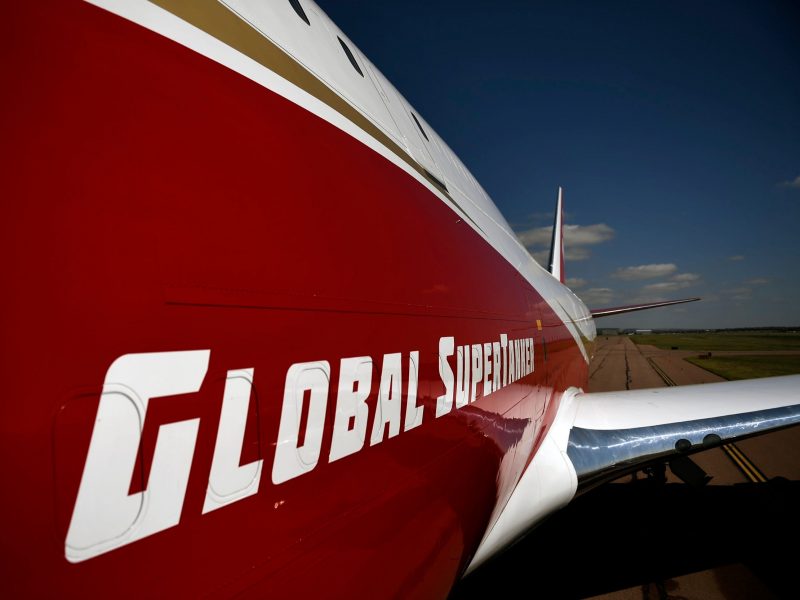- Aerial firefighting firms are repurposing passenger airliners into flying fire trucks as the intensity of forest and wildfires grows each year.
- Aging aircraft like the Boeing 747 and McDonnell Douglas MD-80 are finding new purpose in the dangerous task.
- Passenger seats are removed and thousand-gallon tanks are being installed to carry water or fire retardants.
- Visit Business Insider’s homepage for more stories.
Forest and wildfires are worsening every year, according to NASA, and battling them is no easy task. The blazes can decimate millions of acres and reduce lush green forests to smoldering piles of ash in a matter of weeks.
While firefighters do what they can from the ground, they’ll often call for air support in the form of aerial tankers, assisting the effort by bombarding the infernos from above with water or fire retardant. It’s a dangerous task but one that’s giving some retired airliners a second-life beyond carrying passengers or freight.
Very few planes are built with firefighting in mind so firms are taking the aging aircraft that have been abandoned by the airlines and repurposing them to stop fires and ultimately, save lives and property. And unlike the current trend in the airline industry, the bigger the jet the better.
The Boeing 747, for example, that once held the title of the world’s largest passenger airliner until the A380 came around now holds the title of the world’s largest firefighting aircraft. There’s only one in existence and its seen action all over the world, making good use of its massive frame that now stores water tanks instead of passengers.
But it's not an easy task as fighting fires requires the aircraft - and the pilots flying them - to get up close and personal with the deadly blazes.
Take a look at why former passenger aircraft are critical to stopping fires.
This Boeing 747 is the world's largest aerial firefighting plane.

Known as the Global Supertanker, this jet has fought fires around the world. Most recently, it's been fighting wildfires in California.

Source: 9News Colorado
The Boeing 747 is normally known for its superior passenger capacity but the Global Supertanker's capacity isn't measured in seats, but gallons.

The passenger compartment of the Jumbo Jet has been stripped of all seats and massive tanks have been installed in its place.

Stretching nearly the length of the aircraft, the tanks can hold 19,200 gallons of water or fire retardant.

Source: 9News Colorado
Here's the command station where a crewmember – much like a bombardier on a warplane – will activate the drop.

The contents of the tanks will then flow out of these ports on the aircraft's belly.

Here's what it looks like in action.

The red chemical is a fire retardant that's often applied to the edges of a blaze to contain the spread.

This particular Boeing 747 has had a long life that's taken it around the world, even before it began fighting fires.

It flew for Japan Airlines and then for Evergreen International Airlines as a cargo freighter.

Source: Planespotters.net
The cockpit is no different, except for one minor feature not found on the passenger or cargo variants...

This "emergency dump" switch that jettisons the contents of the tanks.

Other than that, it looks like a normal Boeing 747 from the outside with no indication that it's actually a flying fire truck.

The casual observer might even confuse its red and white colors for the Boeing house livery found on its Boeing 747-8i during testing.

It's the flagship and sole aircraft of the Global Supertanker Services fleet, based in Colorado Springs, Colorado.

Source: 9News Colorado
But it's not the only former passenger jet enjoying a new lease on life as a firefighter as the Boeing 737 has also found its calling in the field.

Source: Coulson Aviation
Coulson Aviation operates six Boeing 737-300 Fireliners, some of which formerly flew for Southwest Airlines.

Source: Coulson Aviation and Planespotters.net
The jet primarily sees action in North America and Australia, with the latter experiencing devastating wildfires in the past year.

Source: Chek News Canada
Also in the Coulson Aviation fleet are Lockheed Martin C-130 Hercules aircraft.

Source: Coulson Aviation
The four-engine turboprops are most commonly used by the world's militaries for cargo and troop transport.

It can carry up to 4,000 gallons of water or fire retardant in its tanks while having an advantage of its jet counterparts in that it can access remote locations and utilize unpaved runways.

Source: Coulson Aviation
A Coulson Aviation C-130 was involved in a fatal accident in January 2020 while fighting fires in Australia, showing how dangerous the task can actually be.

Source: Aviation International News
One of the more unique planes in the Coulson fleet is the Martin Mars, a World War II-era flying boat used by the US Navy.

Source: Coulson Aviation
The four-engine piston plane would collect water by skimming lakes, with tanks being able to collect 7,200 gallons in under a minute.

Source: CNN
China just built a similar aircraft with plans to also use it to fight fires.

As of 2016, however, they're for sale, with the going rate starting at $3 million.

Source: CNN
Other former passenger liners taking to the skies including the McDonnell Douglas DC-10, once a staple for the likes of Delta Air Lines, Continental Airlines, and American Airlines.

New Mexico's 10 Tanker operates the fleet of four tri-engine DC-10s that can carry 9,400 gallons of fire retardant.

Source: Tanker 10
The jet was fighting fires most recently in California and Arizona in July.

Source: 10 Tanker
Another American workhorse, the McDonnell Douglas MD-80 series aircraft, has also been contributing to the effort.

The Long Beach-built aircraft arrived in Oregon – flying for Erickson Aero Tanker – after careers flying passengers for the likes of Iberia, Scandinavian Airlines, and Japan Airlines, among others.

Source: Planespotters.net
The medium-haul T-tail jets can also hold 3,000 gallons in their holds.

Source: Erickson Aero Tanker
All the jets – large and small – often have to fly very low to effectively drop their payload and frequently find themselves less than 500 feet above the ground when doing so.

It's no easy task but necessary to save lives.


